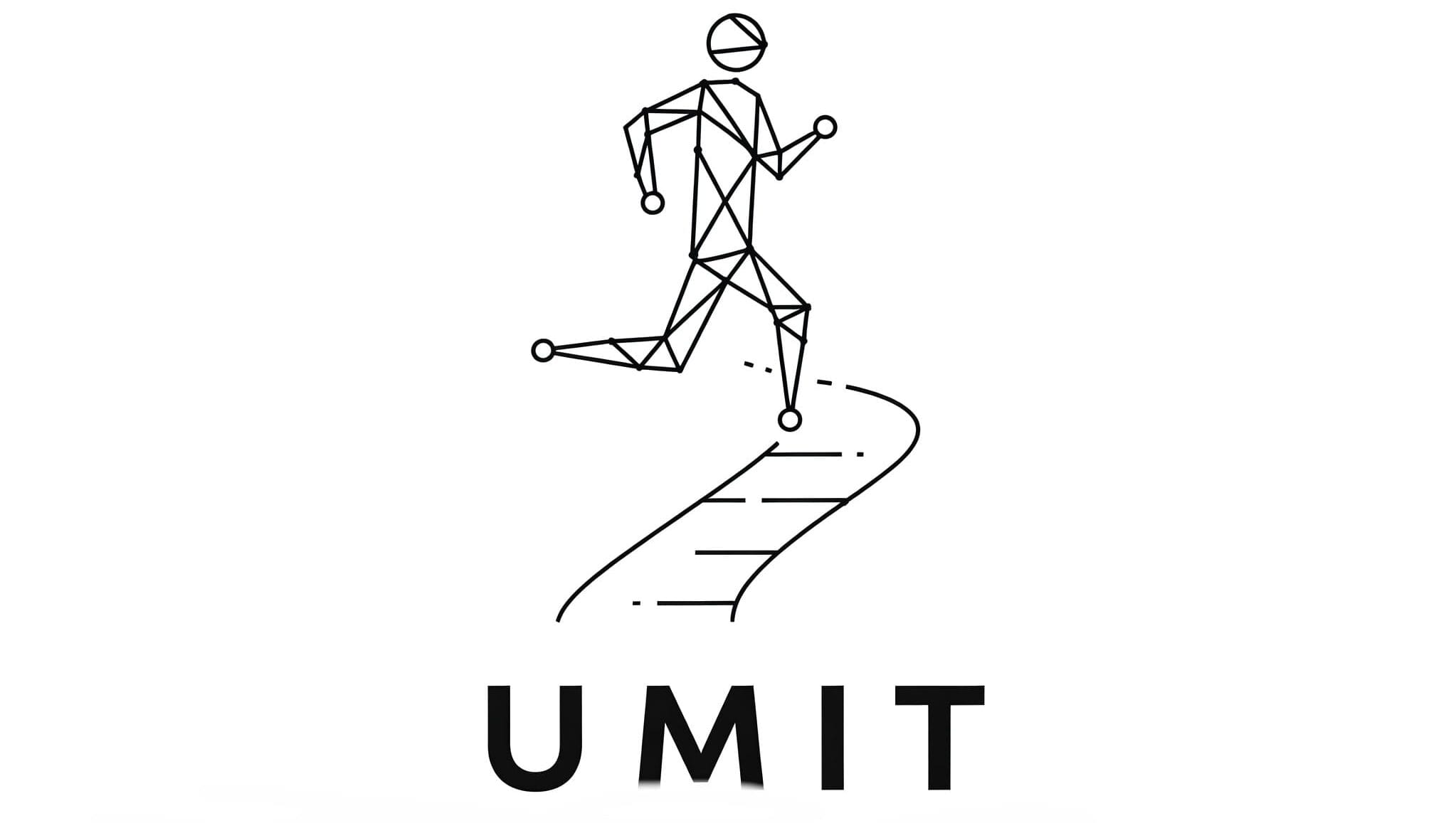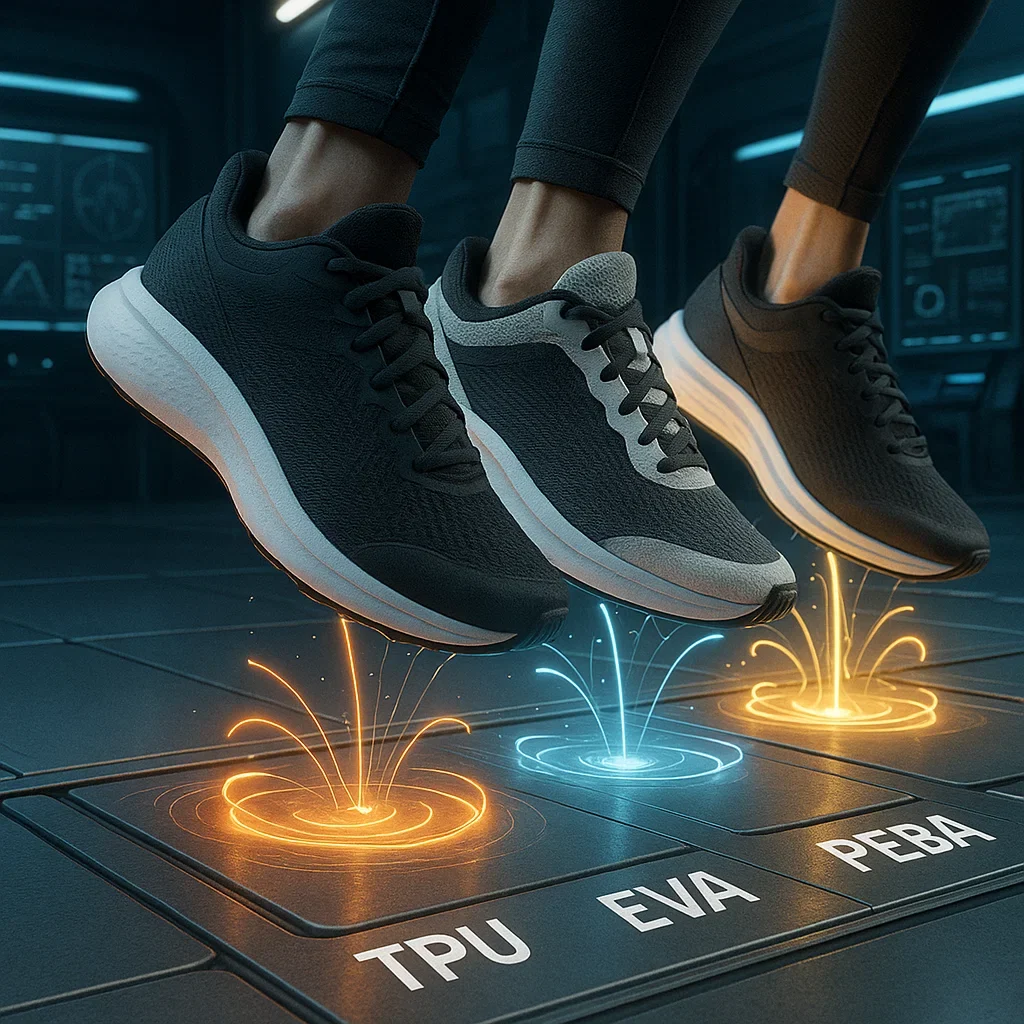🏁 Introduction: What’s Under Your Feet Really Matters
When runners think about shoes, most focus on the upper design, the outsole grip, or even the color. But there’s one component that plays a huge role in your performance, comfort, and long-term foot health: the midsole foam.
This hidden layer between the outsole and the footbed is where all the magic (or disaster) happens. It absorbs shock, provides energy return, and adapts to your stride. But not all foams are created equal — and how long they last can dramatically affect your running economy and injury risk.
In this post, we’ll explore and compare the three most common foams in modern performance shoes:
- EVA (Ethylene Vinyl Acetate)
- TPU (Thermoplastic Polyurethane)
- PEBA (Polyether block amide)
Which one breaks down the fastest? Which gives the best bounce? And which foam will survive a full training season — or a 100K race?
Let’s find out.
🧠 Why Midsole Foam Matters
The midsole foam is more than just a soft cushion. It’s a biomechanical interface that:
- Reduces impact forces on your joints
- Stores and returns energy with each stride
- Influences stride mechanics and cadence
- Alters fatigue over long distances
When foam degrades, it loses these properties. The result? You work harder, your form suffers, and your injury risk increases — even if the shoe looks fine from the outside.
📚 Meet the Players: EVA, TPU, and PEBA
Let’s briefly introduce the big three foams:
🧼 EVA (Ethylene Vinyl Acetate)
- Lightweight and easy to mold
- Common in most daily trainers
- Soft initially, but compresses quickly
- Low durability under heavy mileage
🧪 TPU (Thermoplastic Polyurethane)
- Heavier but very durable
- Higher energy return than EVA
- Resistant to temperature changes
- Used in shoes like Adidas Boost
🚀 PEBA (Polyether block amide)
- Ultra-lightweight and highly responsive
- Excellent rebound and softness
- Found in super shoes like Nike ZoomX, Saucony PWRRUN PB
- Most expensive to produce
🦶 How Each Foam Feels Underfoot
Running shoe foams aren’t just about durability — they shape your entire experience on the road, trail, or track. From the softness of your first step to the rebound you feel in a finishing sprint, foam type defines the ride.
Let’s break down how each of the three major midsole foams performs in key categories:
☁️ Cushioning: Initial Softness & Comfort
EVA
✅ Feels soft and forgiving straight out of the box
⚠️ Loses cushioning quickly — especially for heavier runners
🧪 Compression sets in early (often within 150–250 miles)
TPU
✅ Firmer but stable cushioning
✅ Compresses less under load
⚠️ May feel “dense” or “flat” at slower paces or for lighter runners
PEBA
✅ Exceptionally soft with a “cloud-like” feel
✅ Maintains plushness even during long runs
⚠️ Some runners describe it as too squishy or unstable without proper structure
🔁 Energy Return: How Much Bounce Do You Get?
EVA
⚠️ Basic rebound — efficient enough for easy runs
❌ Loses energy return rapidly as foam fatigues
TPU
✅ Excellent resilience under repeated impact
✅ “Springy” sensation lasts longer than EVA
💡 Best for runners who want bounce with stability
PEBA
🚀 Elite-level energy return — especially in super shoes
✅ Feels “explosive” during toe-off
⚠️ Can feel unstable without plates or dual-density builds
🏃♂️ Ride Feel: What Kind of Runner Loves It?
| Foam | Best for… | Ride Character |
|---|---|---|
| EVA | Newer runners, budget shoes | Soft, predictable, short lifespan |
| TPU | Daily trainers, high-mileage runners | Dense but stable, reliable |
| PEBA | Racers, elites, tempo sessions | Light, bouncy, fast — but needs structure |
⚖️ Summary Table: Performance Feel
| Property | EVA | TPU | PEBA |
|---|---|---|---|
| Cushioning Feel | ⭐⭐⭐⭐☆ | ⭐⭐⭐☆☆ | ⭐⭐⭐⭐⭐ |
| Energy Return | ⭐⭐☆☆☆ | ⭐⭐⭐⭐☆ | ⭐⭐⭐⭐⭐ |
| Stability | ⭐⭐⭐⭐☆ | ⭐⭐⭐⭐⭐ | ⭐⭐☆☆☆ |
| Weight | ⭐⭐⭐⭐☆ | ⭐⭐☆☆☆ | ⭐⭐⭐⭐⭐ |
| Ideal Use | Easy runs | Long runs | Races / Speed |
⏳ How Long Do These Foams Really Last?
You can’t judge a shoe’s longevity by its price tag or weight. The real factor is foam durability — how long the midsole resists compression, deformation, and energy loss.
Let’s dive into how each foam holds up over time.
🧼 EVA: Lightweight, But Short-Lived
- Compression Set: High
- Typical Lifespan: ~300–500 miles (480–800 km)
- Common Fail Points: Visible midsole creasing, flat feeling underfoot, loss of rebound
Verdict: EVA feels great in the beginning but deteriorates quickly — especially for runners over 75 kg or those running on hard surfaces.
🧪 TPU: Built to Last
- Compression Set: Low
- Typical Lifespan: ~500–800 miles (800–1,300 km)
- Common Fail Points: Gradual firming over time, slight weight penalty
Verdict: TPU is a tank. While heavier and less plush, it resists breakdown better than most foams and performs consistently over months of use.
🚀 PEBA: Soft Power with a Catch
- Compression Set: Moderate (depends on formulation)
- Typical Lifespan: ~300–700 miles (480–1,120 km)
- Common Fail Points: Lateral wall collapse, rebound loss in unplated shoes
Verdict: PEBA foams like ZoomX or PWRRUN PB are lightweight and responsive but can degrade faster without plate support or dual-density builds.
📊 Durability Comparison Table
| Foam | Compression Resistance | Lifespan (mi) | Lifespan (km) | Notes |
|---|---|---|---|---|
| EVA | ❌ Poor | 300–500 | 480–800 | Cheap, soft, but wears quickly |
| TPU | ✅ Excellent | 500–800 | 800–1,300 | Dense, heavy, but durable |
| PEBA | ⚠️ Moderate | 300–700 | 480–1,120 | High performance, but fragile if unstructured |
🧪 What Affects Foam Longevity?
- Runner Weight – Heavier runners compress foam faster.
- Surface Type – Asphalt degrades foam faster than grass or trails.
- Rotation Strategy – Using multiple shoes gives foam time to recover.
- Storage – Heat and humidity speed up foam aging even when not worn.
🌍 Environmental Impact of Midsole Foams
In the age of sustainability, runners are becoming more aware of what’s underfoot — not just for performance, but for the planet.
Let’s break down the environmental profile of each foam:
♻️ EVA
- Biodegradability: Low
- Recyclability: Difficult; rarely reused
- Eco Profile: Made from petroleum-derived polymers
- Bonus: Some brands now use bio-EVA blends (e.g. sugarcane EVA in Allbirds)
🌱 TPU
- Biodegradability: Extremely low
- Recyclability: Technically possible (thermoplastic), but rarely done
- Eco Profile: High energy production cost
- Bonus: Durable enough to delay shoe replacement
🌿 PEBA
- Biodegradability: Very low
- Recyclability: Not viable
- Eco Profile: High performance = short lifespan = more waste
- Bonus: Some eco-conscious brands exploring PEBA blends with recycled content
Conclusion: From an environmental perspective, all three foams raise sustainability challenges — especially when paired with short product lifespans. More durable shoes (like those with TPU) may create less cumulative waste.
💸 Cost vs Performance
Foam choice affects both retail price and per-mile value.
| Foam | Avg Shoe Price | Avg Lifespan | Cost Per 100 Miles |
|---|---|---|---|
| EVA | $100–140 | ~400 miles | ~$30–35 |
| TPU | $140–180 | ~650 miles | ~$22–27 |
| PEBA | $180–300 | ~500 miles | ~$36–60 |
- EVA: Cheap upfront, expensive long term if replaced frequently.
- TPU: Best long-term value; ideal for budget-conscious high-mileage runners.
- PEBA: Expensive, but often chosen for racing, not daily wear.
🏷️ Brand-Specific Foam Technologies
Many brands use proprietary names, but they’re often variants of these three base foams:
EVA-Based Foams
- Nike Cushlon
- Brooks BioMoGo DNA
- ASICS FlyteFoam
TPU-Based Foams
- Adidas Boost
- Saucony PWRRUN+
- Under Armour HOVR
PEBA-Based Foams
- Nike ZoomX
- Saucony PWRRUN PB
- Reebok Floatride Energy Pro
- Mizuno Enerzy Lite+
🧭 Which Foam Should You Choose?
There’s no one-size-fits-all foam. Each runner’s needs, goals, body, and budget are different. Here’s a quick guide to match the foam with the runner:
👟 Choose EVA If You:
- Prefer soft cushioning underfoot, especially on short runs
- Are on a budget or buying your first pair
- Don’t mind replacing shoes every 3–4 months
Avoid if: You’re a high-mileage runner or have joint issues — foam fatigue can catch up fast.
🏋️♂️ Choose TPU If You:
- Want shoes that last longer (up to 800 miles or more)
- Run daily or train for marathons/ultras
- Don’t mind slightly heavier shoes with denser ride
Avoid if: You need lightweight speed-focused shoes.
🏁 Choose PEBA If You:
- Want maximum energy return and speed
- Race competitively and don’t mind premium pricing
- Use a rotation strategy (not wearing PEBA daily)
Avoid if: You need a stable platform or long-term durability.
✅ Buyer’s Checklist
Before you buy your next running shoe, ask yourself:
| Question | What to Consider |
|---|---|
| How many miles do I run weekly? | High mileage = favor TPU durability |
| Do I race often? | PEBA gives you performance edge |
| Am I injury-prone? | Firmer foams may offer more support |
| Do I run on roads or trails? | Trails benefit from softer foam + grip |
| What’s my budget? | EVA = entry-level, TPU = value, PEBA = premium |
🏆 Final Verdict
| Foam | Best For | Worst For |
|---|---|---|
| EVA | Beginners, low budget, soft feel | Long runs, heavy runners |
| TPU | High mileage, durability, consistency | Lightweight race day feel |
| PEBA | Speed, performance, race day | Daily abuse, budget concerns |
🏁 Final Thoughts
Whether you’re chasing PRs, running ultras, or just getting started, your midsole foam matters more than you think. Understanding the differences between EVA, TPU, and PEBA can help you choose the right shoes, reduce injury risk, and stretch your investment further.
There’s no perfect foam — only the right one for your needs. Train smart, rotate wisely, and don’t ignore the warning signs of foam fatigue. Got a favorite foam or a durability hack? Share it with us — your experience might help someone else run stronger.
Run light, run long, and let your foam do the work. 🏃♂️🔥
❓ Frequently Asked Questions
🧼 What is EVA foam in running shoes?
🧪 What is TPU foam, and how does it compare to EVA?
🚀 What makes PEBA foam unique?
📏 Which foam lasts the longest?
📉 How do I know if my midsole foam is worn out?
🧍 Do heavier runners compress foam faster?
🏁 Is PEBA foam only for elite runners?
🎯 Which foam is best for long training runs?
🧰 Can I mix foam types in my shoe rotation?
🌡️ Does temperature affect foam performance?
🪶 Which foam is the lightest?
💥 Is higher energy return always better?
🌍 Which foam is most eco-friendly?
📚 Is PEBA used in all carbon plate shoes?
🧽 How should I clean foam midsoles?
🔁 Do foam shoes need rest days like muscles?
🛒 Are expensive foams worth the cost?
📦 Can I recycle old foam shoes?
🚧 What happens if I keep running on dead foam?
💬 Which foam do elite marathoners prefer?
🔗 Further Reading
- 🔬 The Effect of Midsole Hardness on Running Mechanics and Injury Risk – ResearchGate
- 🧪 Running shoe cushioning properties and biomechanical adaptations – PubMed
- 👣 Longitudinal midsole stiffness changes and injury risk in runners – SAGE Journals
- 📏 Running shoe wear and performance loss: Evidence from mechanical testing – NCBI
- 🧼 How to Clean Running Shoes Properly – Runner’s World

About the Author
Lost Pace is an ultramarathon runner, shoe-tester and the founder of umit.net. Based year-round in Türkiye’s rugged Kaçkar Mountains, he has logged 10,000 + km of technical trail running and completed multiple 50 K–100 K ultras.
Blending mountain grit with data, Lost analyses power (CP 300 W), HRV and nutrition to craft evidence-backed training plans. He has co-written 260 + long-form guides on footwear science, recovery and endurance nutrition, and is a regular beta-tester of AI-driven coaching tools.
When he isn’t chasing PRs or testing midsoles, you’ll find him sharing peer-reviewed research in plain English to help runners train smarter, stay healthier and finish stronger.
Ultrarunner · Data geek · Vegan athlete

